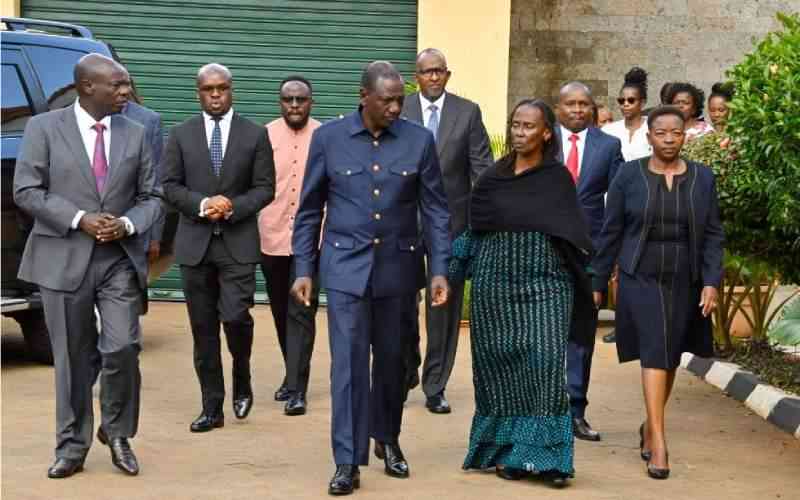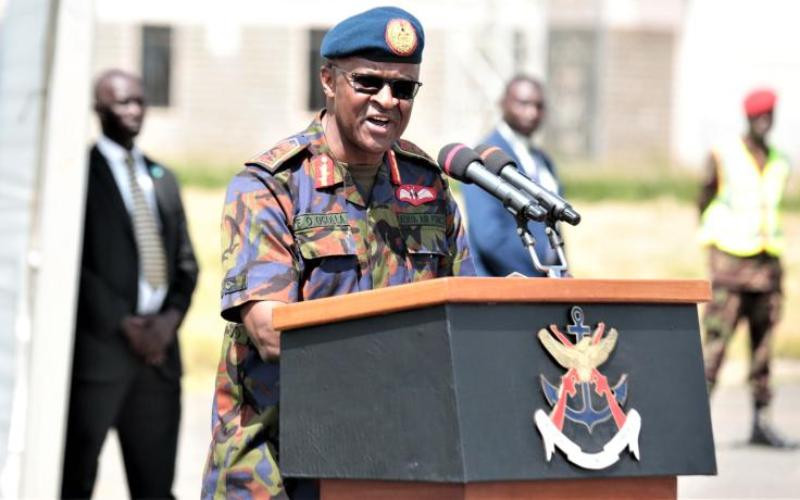By Mwaniki Munuhe
He is the most sought after politician today by leading presidential aspirants. He has tried to run for president before, but was defeated at during party nominations.
He is said to be adept in political scheming, but what is the real political worth of the Eldoret North MP William Ruto?
Ruto, 46, who emerged as the political kingpin of the Kalenjin community after the exit of former President Moi, has attracted the attention of front runners in the race for State House – specifically Prime Minister Raila Odinga, and Deputy Prime Minister, Uhuru Kenyatta.
The political grapevine is awash with reports of an assortment of political offers being extended to Ruto by the political leaders ahead of the March 4 General Election.
However, investigations by The Standard On Sunday revealed that the motivation to incorporate Ruto in a political alliance is not so much about the number of votes he can bring on board nationally, but the constitutional requirement that one must garner 25 per cent votes in at least 24 counties.
It is understood that Raila and Uhuru see the URP leader as the strongest running mate largely because of the number of counties he appears capable of bagging in the populous Rift Valley region.
However, there are those who see him as a politician who has been over-rated and is largely a creation of the media.
Counties
“Ruto is a mobiliser. Ruto is a dare devil; he has considerable support in the Rift Valley. But political strength is imagined before it is confirmed. Every politician overrates himself. However, in terms of real support he commands a lot of sway in some sections of the Rift Valley, outside that, it is not clear how much influence he has,” said the MP for Rangwe, Martin Ogindo, who is also a confidant of Raila Odinga.
Ruto, unlike Deputy Prime Minister Musalia Mudavadi, Cabinet minister Eugene Wamalwa, and Vice-President Kalonzo Musyoka, has about half a dozen counties in his home turf, which he can comfortably use to negotiate a political deal.
“Some of the presidential aspirants are attracted to Ruto because he has energy. He is charismatic, and is a hands-on politician. Besides that, he brings to the table more than any other aspirant can bring in terms of counties,” said Nominated MP Amina Abdalla.
URP appears to be most popular in Uasin Gishu, Nandi, Baringo, Kericho, Bomet, and Elgeyo Marakwet counties, where Ruto can easily garner the 25 per cent of the presidential vote.
Most of the other presidential contenders can hardly claim to have as many counties lined up in their favour. Take for instance Vice-President Stephen Kalonzo Musyoka.
His political muscle in confined to just three counties in his home turf. These are Machakos, Makueni, and Kitui.
Stay informed. Subscribe to our newsletter
On his part, deputy Prime Minister Musalia Mudavadi has the Western region support divided between him and Eugene Wamalwa.
Whereas Mudavadi appears to have the support of Kakamega, and Vihiga counties, Wamalwa seems to rely largely on Bungoma and Trans Nzoia counties within his home turf.
Busia County, however, has attracted a tug of war between Raila and Mudavadi after the PM wooed the latter’s close ally and former Attorney General Amos Wako into ODM and appointed Budalang’i MP Ababu Namwamba to Cabinet.
“You see for us, Ruto is the best person to work with, he is starting the race with close to seven counties, the PM has four, and Uhuru 12 counties. An alliance with him makes a lot of political sense for us because it would mean we would start the race with 19 counties ,” said a TNA insider, who did not want to be quoted.
Rules of engagement
For Raila and Uhuru, despite their national appeal, meeting the 24 counties support threshold is a challenge, it is for this reason that the duo are looking for a running mate with a capacity to fill in the gaps.
The PM’s Nyanza backyard has four counties – Siaya, Migori, Kisumu and Homa Bay. Uhuru’s Mount Kenya region has Tharaka Nithi, Embu, Meru, Nyandarua, Nyeri, Kirinyaga, Murang’a, and Kiambu.
The DPM may also easily bag Nakuru and Laikipia, which have traditionally voted with the Mt Kenya bloc.
The Rift Valley vote was the linchpin behind former President Moi’s strength that enabled him to stay in power for more than 20 years despite facing heavy opposition from current President Kibaki, veteran politician Kenneth Matiba, and Raila among others. Ruto and Uhuru, however, have the challenge of the political headache brought to them by the charges they are facing at the International Criminal Court.
The law requires all presidential aspirants willing to enter into a coalition to formulate rules of engagement and deposit the same with the registrar of political parties to ensure they keep their promises.
It will be interesting to see which politician among the many suitors seeking his hand Ruto will ultimately fall for.
 The Standard Group Plc is a
multi-media organization with investments in media platforms spanning newspaper
print operations, television, radio broadcasting, digital and online services. The
Standard Group is recognized as a leading multi-media house in Kenya with a key
influence in matters of national and international interest.
The Standard Group Plc is a
multi-media organization with investments in media platforms spanning newspaper
print operations, television, radio broadcasting, digital and online services. The
Standard Group is recognized as a leading multi-media house in Kenya with a key
influence in matters of national and international interest.
 The Standard Group Plc is a
multi-media organization with investments in media platforms spanning newspaper
print operations, television, radio broadcasting, digital and online services. The
Standard Group is recognized as a leading multi-media house in Kenya with a key
influence in matters of national and international interest.
The Standard Group Plc is a
multi-media organization with investments in media platforms spanning newspaper
print operations, television, radio broadcasting, digital and online services. The
Standard Group is recognized as a leading multi-media house in Kenya with a key
influence in matters of national and international interest.








